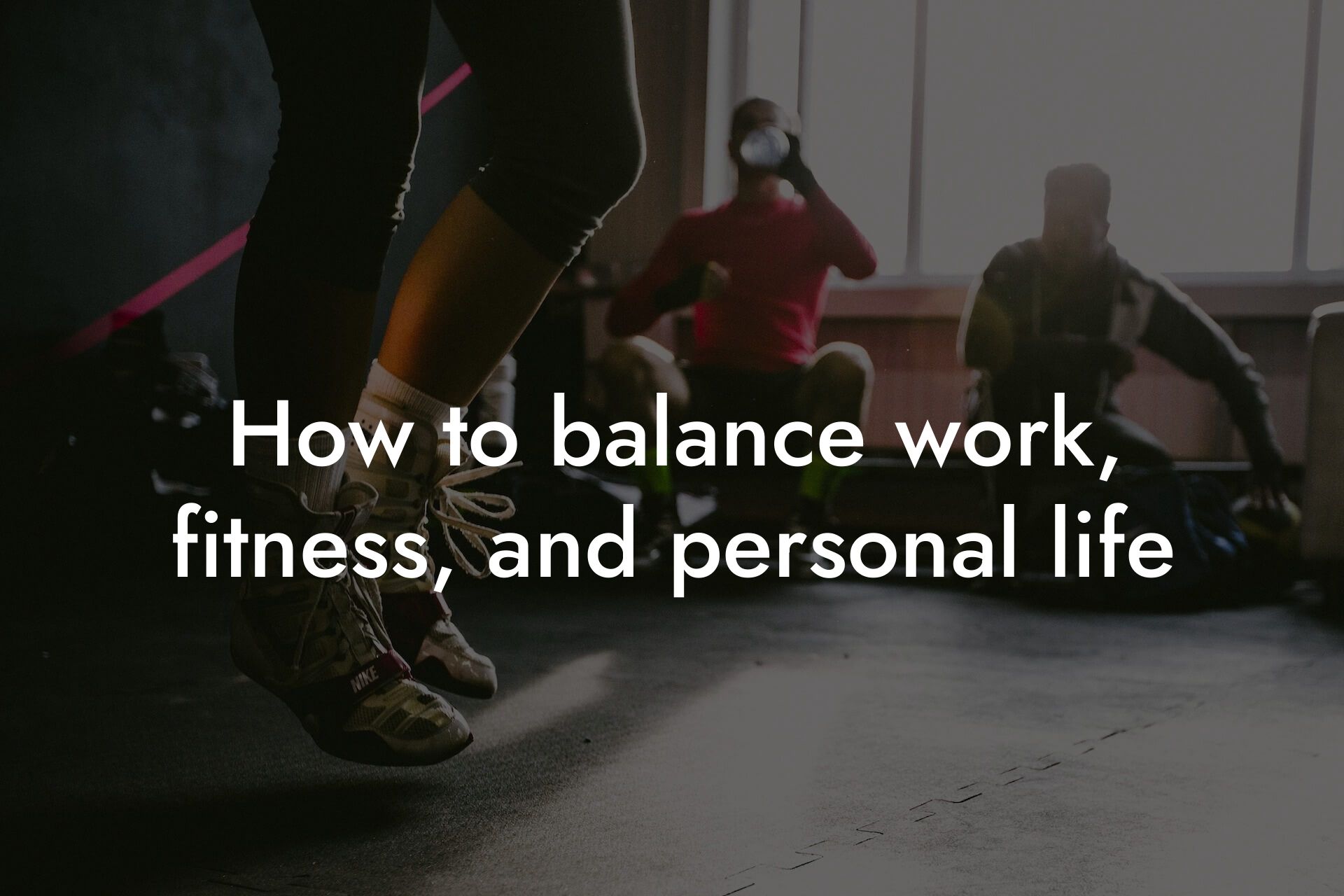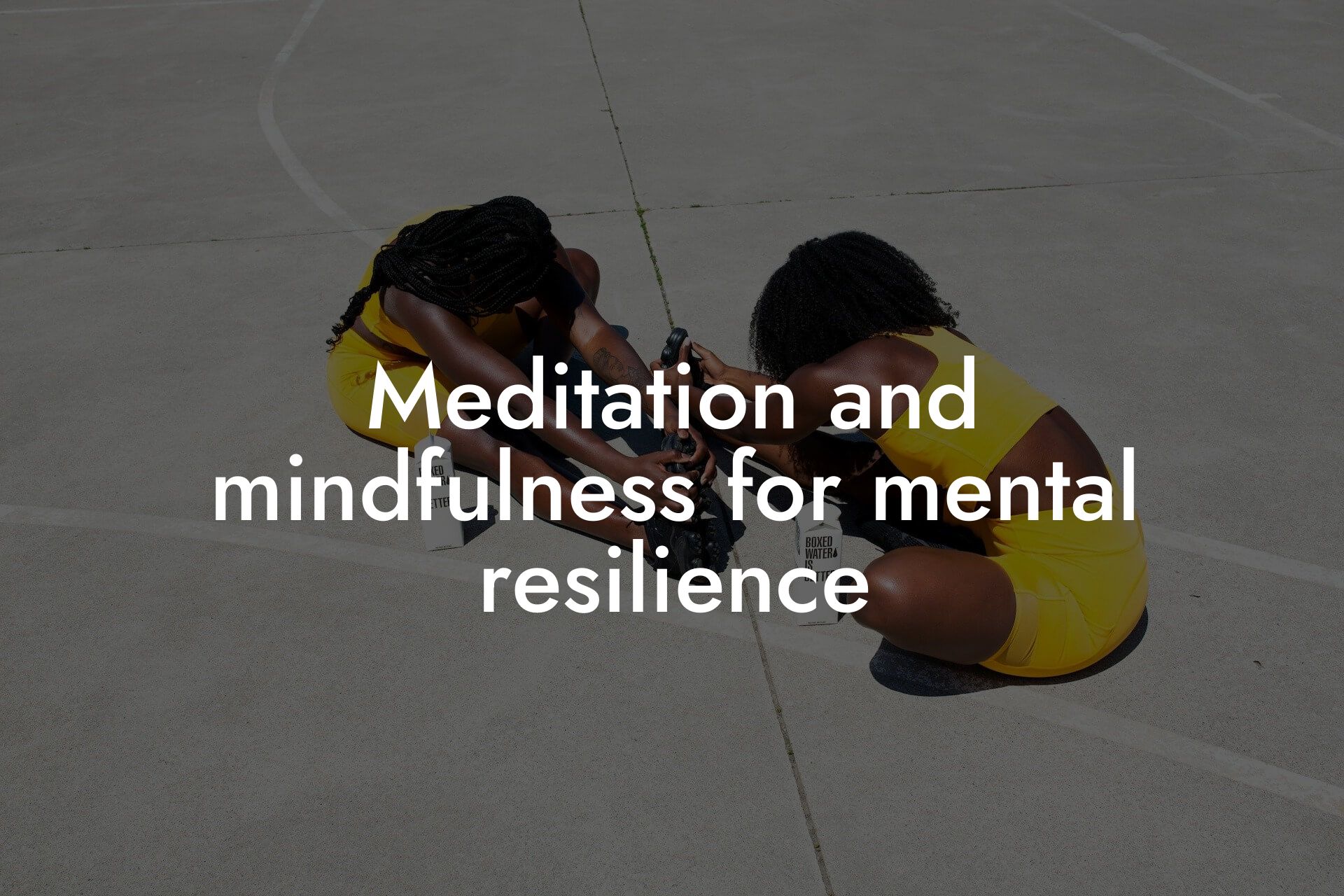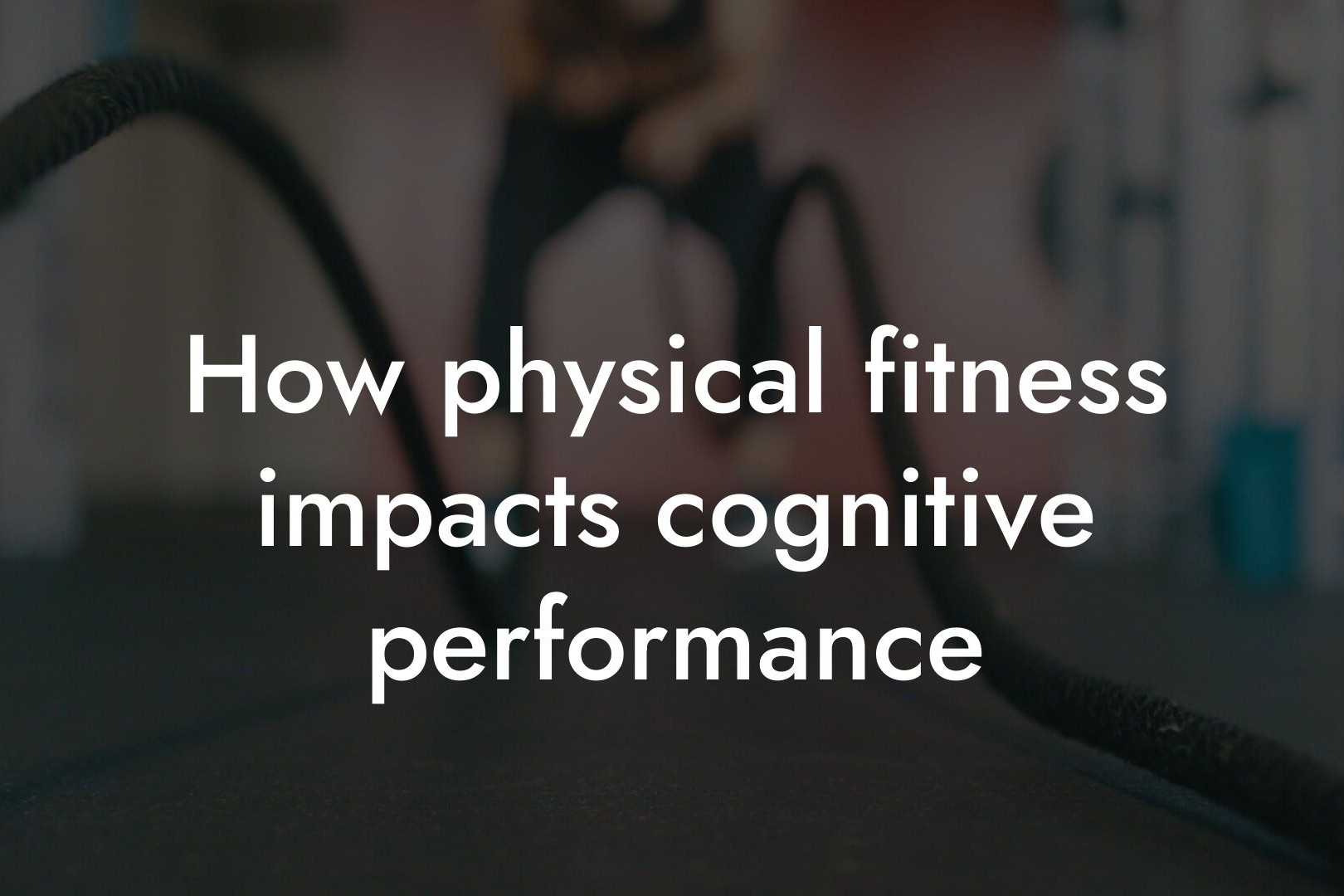Burnout is a state of emotional, mental, and physical exhaustion caused by prolonged stress, overwork, and lack of balance in life. High-earning professionals, in particular, are prone to burnout due to the demands of their careers, long working hours, and the pressure to constantly perform at a high level. The consequences of burnout can be severe, ranging from decreased productivity and strained relationships to chronic health problems and even depression.
Table of Contents
- The Role of Exercise in Preventing Burnout
- The Science Behind Exercise and Burnout Prevention
- Types of Exercise that Can Help Prevent Burnout
- Creating an Exercise Routine that Works for High-Earning Professionals
- Overcoming Barriers to Exercise
- The Importance of Rest and Recovery in Exercise
- Monitoring Progress and Staying Motivated
- Frequently Asked Questions
The Role of Exercise in Preventing Burnout
Exercise is a powerful tool in preventing burnout. Regular physical activity has been shown to reduce stress, improve mood, and increase energy levels. Exercise also improves sleep quality, which is essential for physical and mental recovery. High-earning professionals who incorporate exercise into their busy schedules can experience a significant reduction in burnout symptoms and improve their overall well-being.
The Science Behind Exercise and Burnout Prevention
Exercise has a profound impact on the body's stress response system. When we exercise, our body releases endorphins, also known as "feel-good" hormones, which help to reduce stress and anxiety. Exercise also stimulates the production of brain-derived neurotrophic factor (BDNF), a protein that promotes the growth and survival of brain cells. Higher levels of BDNF have been linked to improved mood, reduced stress, and increased cognitive function.
Types of Exercise that Can Help Prevent Burnout
Any type of exercise can help prevent burnout, but some forms of exercise are more effective than others. Aerobic exercises such as running, cycling, and swimming are excellent for reducing stress and anxiety. Resistance training, such as weightlifting, can help improve mood and increase energy levels. Yoga and Pilates can also be beneficial in reducing stress and improving flexibility and balance.
Creating an Exercise Routine that Works for High-Earning Professionals
High-earning professionals often have demanding schedules, making it challenging to find time for exercise. However, incorporating exercise into your daily routine can be achieved with a little creativity and planning. Start by scheduling exercise into your calendar, just as you would any other important appointment. Begin with small, manageable sessions, and gradually increase the duration and intensity as you become more comfortable. Consider working with a personal trainer or fitness coach who can help you develop a customized exercise routine that fits your lifestyle.
Overcoming Barriers to Exercise
High-earning professionals often face unique barriers to exercise, including lack of time, fatigue, and work-related travel. However, with a little creativity, these barriers can be overcome. Consider exercising during your lunch break, or finding a hotel gym while traveling. You can also try bodyweight exercises or high-intensity interval training (HIIT) that require minimal equipment and can be done in a short amount of time.
The Importance of Rest and Recovery in Exercise
Rest and recovery are critical components of any exercise routine. High-earning professionals often neglect rest and recovery, leading to burnout and decreased performance. Adequate rest and recovery allow your body to repair and adapt to the physical demands of exercise, leading to improved performance and reduced risk of injury. Make sure to schedule rest days into your exercise routine, and prioritize sleep and nutrition to support your physical recovery.
Monitoring Progress and Staying Motivated
Monitoring progress and staying motivated are essential for maintaining an exercise routine. High-earning professionals can use tools such as fitness trackers, mobile apps, and progress photos to track their progress. Celebrating small victories and setting realistic goals can also help to stay motivated. Consider working with a fitness coach or personal trainer who can provide support and accountability.
Burnout is a serious issue that affects many high-earning professionals. Exercise is a powerful tool in preventing burnout, reducing stress and anxiety, and improving overall well-being. By incorporating exercise into your daily routine, you can improve your physical and mental health, increase productivity, and achieve your career goals. Remember to start small, be consistent, and prioritize rest and recovery to get the most out of your exercise routine.
At Tano Performance Group, we understand the importance of exercise in preventing burnout. Our team of experts uses the latest technology, including DEXA machines, to provide high-earning professionals with a comprehensive body assessment and personalized fitness coaching. Take the first step towards preventing burnout and achieving your fitness goals. Contact us today to learn more about our services and how we can help you take your performance to the next level.
Frequently Asked Questions
What is burnout, and how does it affect high-earning professionals?
Burnout is a state of emotional, mental, and physical exhaustion caused by prolonged stress, overwork, and lack of balance in life. High-earning professionals are particularly vulnerable to burnout due to the high demands of their jobs, long working hours, and pressure to constantly perform at a high level. Burnout can lead to decreased productivity, increased absenteeism, and a higher risk of chronic diseases like hypertension, diabetes, and cardiovascular disease.
How can exercise help prevent burnout in high-earning professionals?
Exercise is a powerful tool in preventing burnout by reducing stress, improving mood, and increasing energy levels. Regular physical activity can help mitigate the negative effects of chronic stress, improve sleep quality, and enhance cognitive function. Exercise also releases endorphins, which are natural mood-boosters that can help reduce feelings of anxiety and depression.
What types of exercise are most effective in preventing burnout?
Aerobic exercises like running, cycling, and swimming are excellent for reducing stress and anxiety. Strength training exercises like weightlifting and bodyweight exercises can help improve mood and increase energy levels. High-intensity interval training (HIIT) has also been shown to be effective in reducing burnout symptoms. Additionally, activities like yoga and Pilates can help improve flexibility, balance, and overall well-being.
How often should I exercise to prevent burnout?
The American Heart Association recommends at least 150 minutes of moderate-intensity aerobic exercise or 75 minutes of vigorous-intensity aerobic exercise per week. However, even small amounts of physical activity, such as 10-15 minutes per day, can be beneficial in reducing burnout symptoms. Consistency is key, so aim to exercise at least 3-4 times per week, with at least one day of rest in between.
What are some exercise routines that can be done at home or in the office?
There are many exercises that can be done at home or in the office, including bodyweight exercises like push-ups, squats, and lunges. You can also do chair squats, desk dips, and leg raises at your desk. Yoga and Pilates can be done in a small space, and there are many online resources and apps that provide guided workouts. Even a short walk during your lunch break can be beneficial.
How can I fit exercise into my busy schedule as a high-earning professional?
Fitting exercise into your busy schedule requires creativity and commitment. Try waking up earlier to fit in a morning workout, or schedule exercise into your calendar like you would any other appointment. You can also try breaking up your exercise routine into smaller chunks throughout the day, such as taking the stairs instead of the elevator or doing a few jumping jacks during commercial breaks.
What are some common barriers to exercise that high-earning professionals face, and how can they be overcome?
Common barriers to exercise include lack of time, energy, and motivation. These barriers can be overcome by finding an exercise routine that you enjoy, scheduling it into your calendar, and finding a workout buddy or accountability partner. You can also try to focus on the benefits of exercise, such as increased energy and productivity, rather than the perceived drawbacks.
How can exercise improve my physical appearance and body composition?
Regular exercise can help improve your physical appearance and body composition by increasing muscle mass, reducing body fat, and improving bone density. Exercise can also improve skin tone, reduce inflammation, and increase energy levels. As a high-earning professional, you may be interested in achieving a specific physique or body fat percentage, and exercise can help you achieve these goals.
What are some exercises that can help improve bone density?
Exercises that can help improve bone density include weight-bearing exercises like running, jumping, and weightlifting. Resistance band exercises and high-impact aerobics like dancing and aerobics classes can also be beneficial. Additionally, exercises that target the core muscles, such as planks and crunches, can help improve posture and reduce the risk of osteoporosis.
How can exercise improve my mental health and reduce stress?
Exercise has been shown to have a positive impact on mental health by reducing symptoms of anxiety and depression, improving mood, and enhancing cognitive function. Exercise can also reduce stress by releasing endorphins, which are natural mood-boosters. Regular physical activity can also improve sleep quality, which is essential for overall mental health and well-being.
What are some tips for staying motivated to exercise regularly?
Staying motivated to exercise regularly requires setting specific and achievable goals, finding an exercise routine that you enjoy, and tracking your progress. You can also try finding a workout buddy or accountability partner, rewarding yourself for milestones achieved, and focusing on the benefits of exercise rather than the perceived drawbacks.
How can I track my progress and stay accountable?
There are many ways to track your progress and stay accountable, including using a fitness tracker or wearable device, keeping a workout log, and taking progress photos. You can also try working with a personal trainer or fitness coach, joining a fitness community or online forum, and sharing your goals and progress with a friend or family member.
What are some common mistakes that high-earning professionals make when it comes to exercise and burnout prevention?
Common mistakes that high-earning professionals make when it comes to exercise and burnout prevention include not prioritizing self-care, neglecting to schedule exercise into their calendar, and not finding an exercise routine that they enjoy. They may also try to do too much too soon, leading to burnout and injury. It's essential to start slowly, be consistent, and focus on progress rather than perfection.
How can I prioritize self-care and make exercise a non-negotiable part of my daily routine?
Prioritizing self-care and making exercise a non-negotiable part of your daily routine requires a mindset shift and a commitment to your overall well-being. Try scheduling exercise into your calendar like you would any other appointment, and treat it as a non-negotiable part of your daily routine. You can also try to focus on the benefits of exercise, such as increased energy and productivity, rather than the perceived drawbacks.
What are some resources that high-earning professionals can use to learn more about exercise and burnout prevention?
There are many resources that high-earning professionals can use to learn more about exercise and burnout prevention, including online articles and blogs, fitness apps and websites, and books on exercise and wellness. They can also try working with a personal trainer or fitness coach, joining a fitness community or online forum, and consulting with a healthcare professional.
How can I get started with exercise and burnout prevention today?
Getting started with exercise and burnout prevention today requires taking small steps towards a healthier and more balanced lifestyle. Try scheduling a workout into your calendar, taking a short walk during your lunch break, or doing a few jumping jacks during commercial breaks. You can also try to focus on the benefits of exercise, such as increased energy and productivity, rather than the perceived drawbacks. Remember, every small step counts, and consistency is key.
What are some common myths about exercise and burnout prevention that high-earning professionals should be aware of?
Common myths about exercise and burnout prevention include the idea that exercise has to be time-consuming, that you need to be a certain age or fitness level to start exercising, and that exercise is only for physical health. These myths can be debunked by understanding the benefits of exercise, finding an exercise routine that you enjoy, and starting slowly and consistently.
How can exercise improve my overall quality of life and increase my earning potential?
Exercise can improve your overall quality of life and increase your earning potential by increasing energy levels, improving cognitive function, and enhancing overall well-being. Regular physical activity can also improve your physical appearance and body composition, leading to increased confidence and self-esteem. Additionally, exercise can reduce the risk of chronic diseases, leading to increased productivity and reduced absenteeism.
What are some tips for exercising safely and avoiding injury?
Exercising safely and avoiding injury requires starting slowly, listening to your body, and warming up and cooling down properly. You should also try to focus on proper form and technique, avoid overexertion, and stay hydrated. It's also essential to consult with a healthcare professional before starting any new exercise routine, especially if you have any underlying health conditions.
How can I make exercise a habit and incorporate it into my busy lifestyle?
Making exercise a habit and incorporating it into your busy lifestyle requires consistency, commitment, and creativity. Try to find an exercise routine that you enjoy, schedule it into your calendar, and treat it as a non-negotiable part of your daily routine. You can also try to find ways to incorporate physical activity into your daily routine, such as taking the stairs instead of the elevator or doing a few jumping jacks during commercial breaks.
Here are some related articles you might love...
- How to balance work, fitness, and personal life
- Meditation and mindfulness for mental resilience
- How physical fitness impacts cognitive performance
- Stress management techniques for busy professionals
- The impact of physical appearance on self-esteem
- Overcoming body dysmorphia
- Goal setting for physical and mental well-being
- How to stay motivated during your fitness journey
- The connection between physical health and mental clarity
Zak Faulkner
Zak Faulkner is a leading authority in the realm of physical health and body composition analysis, with over 15 years of experience helping professionals optimise their fitness and well-being. As one the experts behind Tano Performance Group, Zak has dedicated his career to providing in-depth, science-backed insights that empower clients to elevate their physical performance and overall health.
With extensive knowledge of DEXA technology, Zak specializes in delivering comprehensive body assessments that offer precise data on body fat, muscle mass, bone density, and overall physique. His expertise enables individuals to make informed decisions and achieve their fitness goals with accuracy and confidence. Zak’s approach is rooted in a deep understanding of human physiology, combined with a passion for helping clients unlock their full potential through personalised strategies.
Over the years, Zak has earned a reputation for his commitment to excellence, precision, and client-focused service. His guidance is trusted by top professionals who demand the best when it comes to their health. Whether advising on fitness programs, nutritional strategies, or long-term wellness plans, Zak Faulkner’s insights are a valuable resource for anyone serious about taking their health and fitness to the next level.
At Tano Performance Group, Zak continues to lead our Content Team revolutionising how professionals approach their physical health, offering unparalleled expertise that drives real results.




